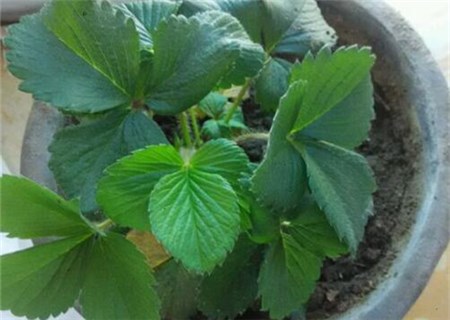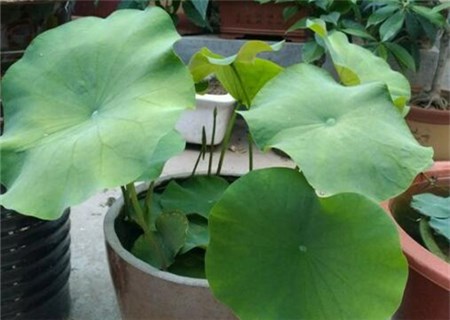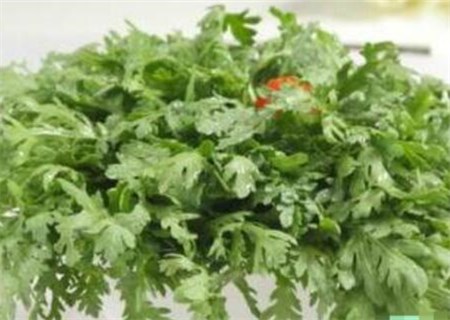What are the planting methods of patchouli seeds in Labiatae? What is the effect and effect? What are the side effects?
Patchouli, also known as Hexiang, Cangao, mountain fennel, etc., belongs to the lip-shaped order, Labiatae perennial herbs, with edible and medicinal value, widely cultivated in China. So do you know what are the planting methods of patchouli seeds? What is the effect and effect? What are the side effects?

I. seed planting method of patchouli
1. Soil preparation and sowing
Huoxiang seedling bed to choose drainage and irrigation, convenient management, fertility of loam or sandy loam land, combined with ploughing and application of rotten manure 22.5 tons / ha as base fertilizer. Then open the trench and knock the fine soil into a tortoise back-shaped seedbed 1.5 meters wide, wet the border surface with mature human feces and urine of 7.5 tons per hectare, spread the seeds with fine sand or plant ash evenly on the border surface, cover about 1 cm thick with fine mud: plant ash = 1 / 0.5, and finally put bamboo or twigs on the border surface with a small arch covered with a thin film for heat preservation. Generally, Honda needs a seedbed of 120 to 150 square meters and seeds of 2.25 to 2.7 kilograms per hectare.
2. Temperature management
After sowing, the temperature of patchouli seeds was maintained at 20: 25 ℃ and emerged at 10: 15 days, and when the emergence rate reached 70%, the film was removed and the suitable growth temperature was 18: 25 ℃. When the seedling height was 12 cm and the main stem had 5 pairs of leaves, the leaf axils at the base began to branch. After June, the temperature increased and the rainy season came, patchouli entered the vigorous growth period.
3. Water and fertilizer management
The stems and leaves of patchouli are used for medicinal purposes, and it is better to apply whole fertilizer (including nitrogen, phosphorus, potassium), such as human and animal feces, cruller and so on. After the first topdressing, 1.5 kg of dilute human and animal manure per square meter was applied after loosening the soil, and then when the seedling height was 7 cm 10 cm, 15 cm 20 cm and 25 cm 30 cm, respectively, after ploughing and weeding, 1500 kg of mature human manure water per mu or 10 kg / mu of diammonium phosphate per mu should be applied, and no more topdressing after ridge closure.
4. Ploughing and weeding
Huoxiang seedlings 3 cm high and time to densify the seedlings, so that the vegetative area of the seedlings is 4 square centimeters, or divide the seedlings, the distance between the seedlings is 6-8 cm. There are 3 to 4 plants of patchouli planted in each hole, and the seedlings can be planted according to the distance between 10 and 12 cm, and the seedlings can be staggered in two rows. Lack of seedlings should be replanted in cloudy days, and then irrigated with thin human and animal dung water after planting to facilitate survival. There were 2 times of weeding and weeding 2 times before the first harvest, respectively, when the seedling height was 3 cm, 12 cm and 21 cm, respectively. When the seedling is 25cm high and 30cm high, after the second harvest, cultivate the soil and protect the root by 6cm.
5. Irrigation and drainage
Patchouli is afraid of both dryness and waterlogging. Before planting or planting, it is watered every morning and evening, and the amount of water should not be too much, in order to wet the border surface. In the process of growth, if the border is white in case of drought, it is necessary to divert water for irrigation. Once every 5-8 days, the water is introduced into the furrow, up to the height of 1 inch, 2 to 2, and 3 degrees, allowing the water to slowly infiltrate and moisten the border. In the rainy season or in case of heavy rain, we should pay attention to drainage and strictly prevent stagnant water so as not to rot the roots and lead to plant death. Therefore, planting patchouli in rice fields to build high border and deep ditches is to prevent Rain Water from accumulating too much and affecting the normal growth of patchouli.
6. Guard against the cold and pass the winter
Patchouli that needs to spend the winter, especially young plants planted in summer and autumn, have poor cold resistance, so frost areas should be covered with grass or a shed to prevent frost at the beginning of winter, or cover the north wind with plastic film to keep warm and prevent frost damage. It is best to apply pig manure, ash and mud to keep warm at the end of autumn. Patchouli planted in September can also be planted in rape or other tall broad-leaved winter crops in early October to protect against frost and cold.
7. Harvesting and processing
Patchouli picks tender stems, leaves or seedlings from April to June. When buds bloom, pick inflorescences and wash them and cut them into sections. Or harvest in full bloom from July to August, cut it off on the ground on a sunny day, and transport it back to dry quickly, Kang dry or shade dry, with a yield of 45007500 kg per hectare. Patchouli with green stems and branches, dry, many leaves and strong aroma is the best.
What is the effect and function of patchouli
Huoxiang Xin, sexual lukewarm, return to the spleen, stomach and lung meridians, with the effect of dispelling heat and surface, dampness of the spleen, regulating qi and stomach, mainly treating dizziness of cold and heat caused by dampness, cold and dampness, dampness and dampness caused by dampness in the middle coke, tightness in the chest, sleepiness of food, vomiting and diarrhea, and evil obstruction of pregnancy, restlessness of fetal movement, halitosis, rhinorrhea, ringworm of hands and feet.
1. The effect of dispelling cold
Patchouli has the effect of dispelling cold, it is slightly warm, it can diverge wind-cold, and is good at treating external wind-cold in summer and moon.
2. The effect of dispelling dampness
Patchouli has the function of dispelling dampness. Patchouli is pungent and lukewarm, good at aromaticity and dampness, which has a good effect on the treatment of summer dampness and dampness in summer.
3. Effect of clearing heat and relieving summer heat
Patchouli has the effect of clearing heat and relieving summer heat. Summer is hot, it is easy to get heatstroke, we all drink Huoxiang Zhengqi liquid to prevent and cure heat, which is very popular.
4. Treatment of vomiting
Patchouli is a common medicine for the treatment of vomiting, which can be better compatible with Atractylodes, Magnolia, tangerine peel, Pinellia ternata and so on.
5. The effect of promoting digestion
Patchouli can promote digestion. The volatile oil it contains can promote gastric juice secretion, enhance the function of digestion, and relieve pain and spasmolysis on people's intestines and stomach.
6. antibacterial and anti-inflammatory effect.
Huoxiang has the function of antibacterial and anti-inflammation. Huoxiang can dilate the microvessels and have the effect of sweating slightly, which can relieve the exterior evil and treat the exogenous exterior syndrome. Huoxiang has inhibitory effect on common pathogenic fungi, Staphylococcus aureus, A hemolytic streptococcus, Diplococcus pneumoniae, Pseudomonas aeruginosa, Escherichia coli and Shigella dysenteriae.
7. Improve immunity
Huoxiang can effectively enhance the immune function of the body. Huoxiang contains methyl piperonol and anethole, which can increase the number of white blood cells, antibacterial and antispasmodic. It can increase white blood cells and improve immunity in patients with tumor and patients with low leukocyte caused by long-term exposure to radiation or drugs.
What are the side effects of patchouli
It generally affects the stomach.
Taboo crowd:
Those with yin deficiency and exuberant fire, evil and constipation forbid to take patchouli.
After knowing which people are not suitable to eat patchouli, we can better choose our diet. in addition, we should also pay attention to the collocation of food in our daily life, so that we can get better health.
Time: 2019-03-17 Click:
- Prev

What are the planting methods of potted lotus? How to control diseases and insect pests? What's the use?
Lotus is also known as lotus, water hibiscus and so on. It is a perennial aquatic herbaceous flower of the genus Lotus. There are many kinds of lotus, which can be divided into two categories: ornamental and edible. Cultivation was recorded in China as early as the Zhou Dynasty. So do you know the methods of planting potted lotus? How to control diseases and insect pests? What's the use? Planting method of potted lotus
- Next

How to control diseases and insect pests of Artemisia annua (also known as chrysanthemum cauliflower)? What are the efficacy and nutritional value? Who is not suitable?
The flower of Artemisia angustifolia is very similar to wild chrysanthemum, so it is also known as chrysanthemum. It has a long history and is widely distributed in China, so do you know how to control diseases and insect pests in the process of cultivation? What are the efficacy and nutritional value? Which people are not fit to eat? According to the records of traditional Chinese medicine, chrysanthemum chrysanthemum is edible for the general population.
Related
- Fuxing push coffee new agricultural production and marketing class: lack of small-scale processing plants
- Jujube rice field leisure farm deep ploughing Yilan for five years to create a space for organic food and play
- Nongyu Farm-A trial of organic papaya for brave women with advanced technology
- Four points for attention in the prevention and control of diseases and insect pests of edible fungi
- How to add nutrient solution to Edible Fungi
- Is there any good way to control edible fungus mites?
- Open Inoculation Technology of Edible Fungi
- Is there any clever way to use fertilizer for edible fungus in winter?
- What agents are used to kill the pathogens of edible fungi in the mushroom shed?
- Rapid drying of Edible Fungi

